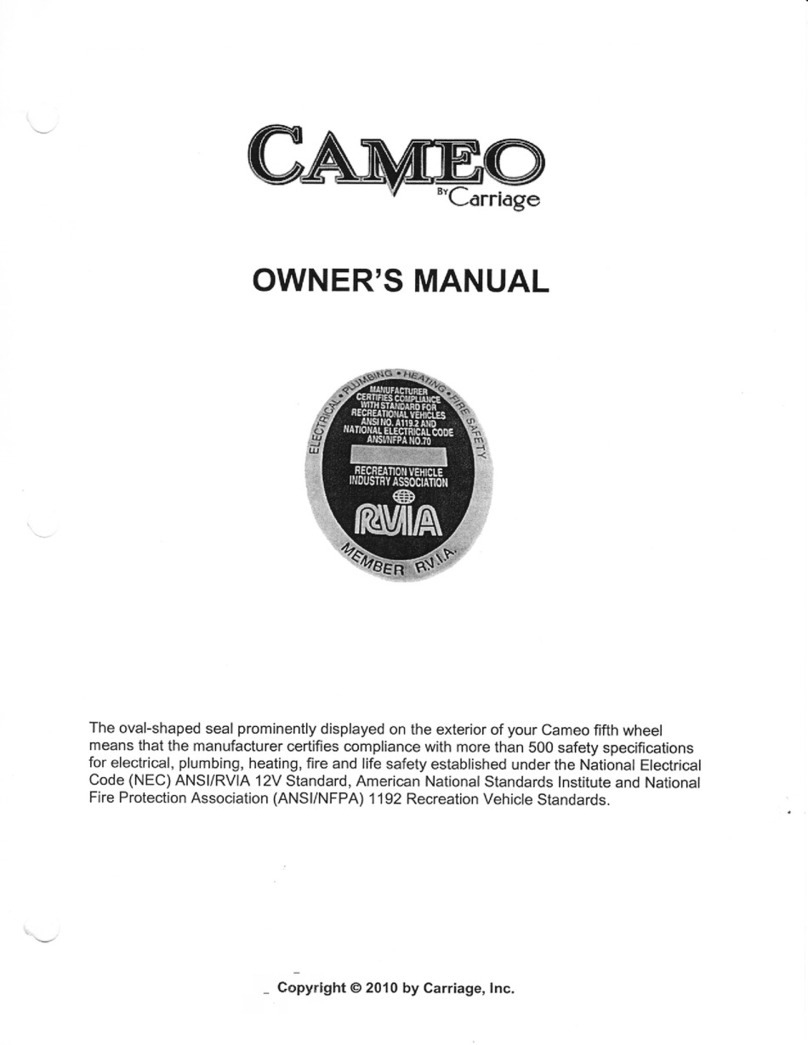
TABLE OF CONTENTS
lntroduction..................
..
...
.......................
..
..........
..
.................................................................
..
4
Important Notice .......................................................................................................................
5
Travel Club Information............................................................................................................6
Handy Checklist.
...
...
..
...............................................................................................................7
Warranty Service ......................................................................................................................8
General Information..................................................................................................................9
• Front Landing Gear...............................................................................................................9
• Stabilizing Jacks ...................................................................................................................
9
• Brake Control........................................................................................
..
.............................. 9
• Wiring Harness Code............................................................................................................9
• Break-Away ..........................................................................................................................9
• Automotive Rear-End Ratios.
...
..
..........................
.. ..
...
.
..
.................
..
....................................9
• Loading...............................................................................................................................10
• Tire Size and Pressure........................................................................................................ 10
• Tire Changing .....................................................................................................................10
• Blocking the Fifth Wheel ...............................
..
.....
..
...............................................
...
........... 10
• Blocking for Long Periods of Time ....................................................................................
..
1O
Suggested Travel Equipment..................................................
.. ..
..
........
..
............................
...
11
~
I • Safety Equipment.
..
...........
...
.
...
.....
..
....................................................................
...
.............
11
Operation.................................................................................................................................12
• Hitching Your Tow Vehicle .................................................................................................. 12
• Towing ...........................................................
...
.................................................................. 12
General Care and Maintenance..............
...
..
........................................................................... 13
• Exterior/Interior Cleaning ..................................................................................
...
.............
..
13
• Exterior Fiberglass....................
..
...........................................................................
....
.......... 13
• Rubber Roof .......................................................................................................................13
•
Sh
.ewer Cabinets!Tubs.....................................
..
................................................................. 13
• Paneling..
..
................................
...
.....................................
...
..........................
..
.....
...
........... 13
• Ceiling.................................................................................................................................14
• Countertops ........................................................................................................................14
• Carpeting ........................................................................................................................
.. ..
14
• Cushions and Drapes .........................................................................................................14
• Bedspreads
..
........................................
..
....................................
..
..
.
...
..
..................
...
.......... 14
Operation of Exterior Features ...........
...
...................................
..
.........
...
...
..
..
........................ 14
• Entry Door........
..
.........................................................................................
..
...........
..
..
....... 14
• Awning Rail.........
..
.....................................................................
..
...............
...
..................... 14
LP Gas System ..........
..
.......
..
..
...
.....................................
...
.....
..
....................................
....
...
.
..
15
• Filling LP Gas Bottles..........................................................................................................15
• Regulator .........................................................
..
.............................................
..
....
..
............ 16
Carri-Ute Owner's Manual Page 2




























